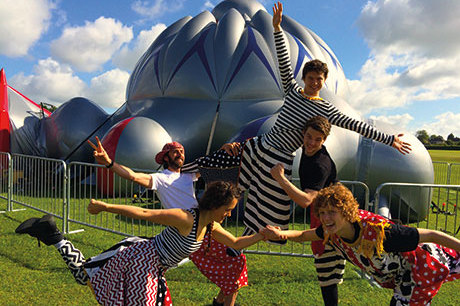
Since 2009, JABADAO has taught more than 2,000 early years practitioners about the many benefits that physical play brings to a child’s development, learning and capacity for happiness, and how to support these through our Developmental Movement Play (DMP) approach. But still we wanted to make more impact.
We wanted to show how small children really inhabit their bodies when they have the opportunity; to show what child-led movement play really looks like, and what happens when adults who are also very physical – dancers and acrobats – meet children as genuine equals. So, in 2012 we commissioned The Tig.
The Tig is a space made for exuberant movement play; a space where the adults are also challenging themselves to find the physical skills that are just out of reach, as young children are; a space where words are replaced by our first and most direct language – movement. The Tig has its own culture – the culture of physicality. In here, we can fast-track to a different way of being and demonstrate, quickly, the way things could be.
Register now to continue reading
Thank you for visiting Nursery World and making use of our archive of more than 35,000 expert features, subject guides, case studies and policy updates. Why not register today and enjoy the following great benefits:
What's included
-
Free access to 4 subscriber-only articles per month
-
Unlimited access to news and opinion
-
Email newsletter providing activity ideas, best practice and breaking news
Already have an account? Sign in here
